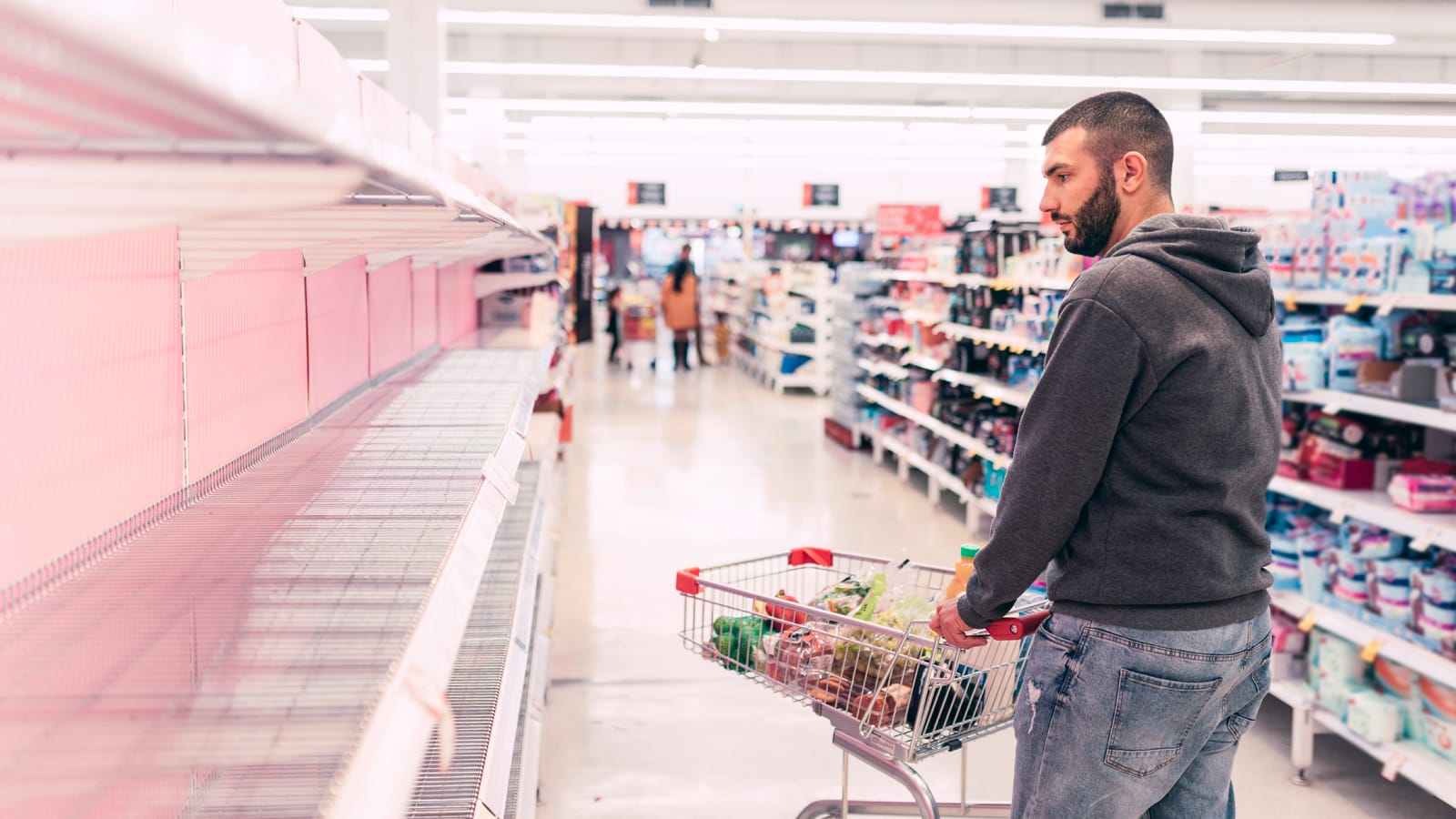Automation: Preparing Supply Chains for the Next Unexpected Peak

Panic buying at the start of the COVID-19 crisis stunned retail stores, often leaving food and essential product shelves stripped bare. This triggered consumer fear that retailers were running out of supply and spurred more panic buying as soon as products like toilet paper, cleaning supplies, and hand sanitizers became available. In reality, warehouses and distribution centers had sufficient inventory capacity, it’s just that retail outlets could not be restocked quickly enough.
In the past, global supply chains have demonstrated the ability to ramp up for spikes in consumer demand, but typically only around holidays. This, however, did not prepare retailers to meet the unexpected demand brought on by the COVID-19 crisis. Why? Supply chains are often too rigid to handle unanticipated surges in demand.
As retailers and their supply chains face increasing pressure from sustained consumer demand, they must integrate automation technology quickly to meet the ebbs and flows that unexpected events will bring — today it’s COVID-19, but who knows what's next.
Supply chains are often too rigid to handle unanticipated surges in demand.
Unexpected demand can send supply chains spinning
On a normal day, distribution warehouses run at 90–95% capacity and current models base in-store inventory levels on the shopping trends of previous months. Retailers, large and small, review and evaluate this information on a monthly, weekly, and hourly basis to anticipate the products consumers will buy. This only changes in preparation for peak seasons centered on the holidays, when retailers plan according to the shopping trends of previous years and based on predictions for the coming season. But this preparation happens months, even a year out from holiday peak shopping.
To meet immediate demand of the COVID-19 crisis, Amazon and third-party delivery services are following their holiday playbook and are urgently hiring warehouse and delivery workers to support order fulfillment. But this is only an interim solution. Permanent solutions require software and automation technology to address unexpected surges more efficiently and cost effectively over the long term, while providing the added benefit of limiting the number of human touches.
Flexing a stressed supply chain
The COVID-19 crisis has made it very clear that retailers (especially grocers) need to consider automation technology throughout their end-to-end supply chains to ensure the capacity and flexibility to meet the swift changes in customer traffic in-store and online. Even before the pandemic, grocers were struggling to optimize order fulfillment to make it both sustainable and profitable in an industry with notoriously tight profit margins.
Now these existing issues have been magnified, making it even more difficult for grocers to fulfill in-store and online orders. In early March, grocers experienced a sharp increase in foot traffic in-store with the beginnings of panic shopping, and grocers raced to re-stock shelves of needed essentials. A couple of weeks later, foot traffic in-store dropped as social distancing and shelter-in-place policies were implemented across the nation, sending online shopping surging with either home delivery or curbside pick-up.
Retail locations with micro-fulfillment solutions can quickly switch application to serve in-store fulfillment, curbside pickup, or support other stores nearby.
Anticipating the unexpected
All retailers should now be considering automation technology and logistics software to provide their supply chains with the agility to handle unanticipated surges. For example, micro-fulfillment is a solution that can be installed either in the back of existing store locations or in nearby distribution centers or dark stores to serve nearby consumers. While micro-fulfillment is largely intended to support e-commerce orders, it can be quite flexible. Retail locations with micro-fulfillment solutions can quickly switch application to serve in-store fulfillment, curbside pickup, or support other stores nearby.
Moreover, automation limits human interaction with inventory. With employee health and safety remaining a top priority, technology like automated guided vehicles (AGVs) and shuttle storage/buffer systems separate employees from working areas. Automation can make it possible for retailers tocontinue operations during a pandemic while maintaining employee safety protocols.
Logistics software integrated across sites can provide a holistic, end-to-end view of an entire supply chain. Retailers can use connected data to make more effective decisions based on consumer shopping behaviors — including panic buying — to determine inventory needs, address major peaks in demand, and prevent downtime.
Making retail ready for the future
Had retailers been further ahead in implementing automation technology and logistics software, they would have been able to react more quickly to panic shopping behaviors and focus efforts on rapid production and inventory replenishment. Unanticipated peaks are likely the new normal. For retailers to right-size inventory challenges and prepare for the next unexpected surge in consumer demand, they must create more capacity, agility, and flexibility in their supply chains.
